Parma: about slow travelling
Close your eyes. Smell the air of Parma. The scent of lime trees in blossom, sweet and delicate, immediately seems to give the atmosphere around you a sense of peace and tranquillity. The silence of its streets early in the morning with a few bicycles stopping at newsstands that in this town still do not seem to have disappeared like in the rest of the country.
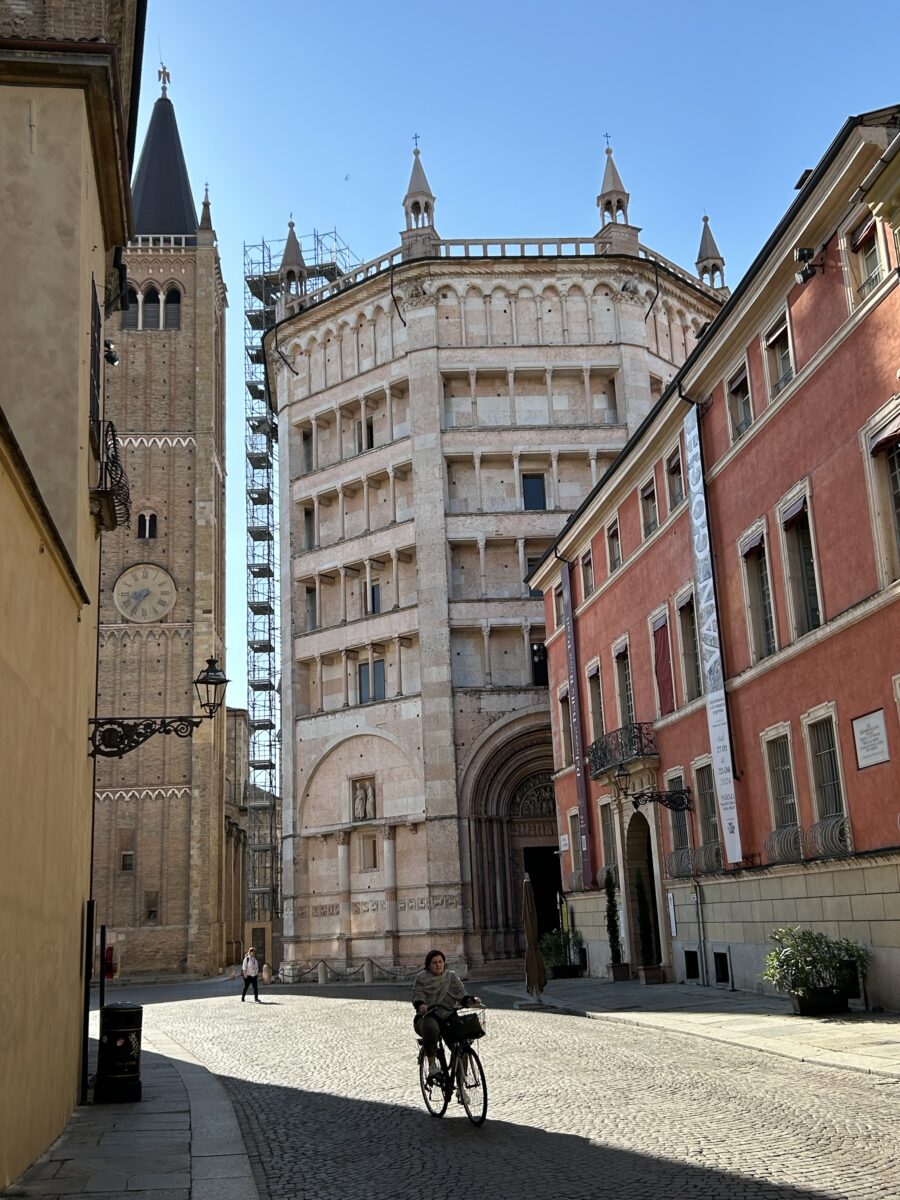
Take a few steps and go for breakfast in the pastry shop at Cocconi’s in Strada della Repubblica 22: here you will find their specialities, small sandwiches filled with prosciutto crudo and salsa tonnata, a familiar good morning among those who live here and return every morning, a few polite words exchanged between the managers and the regulars. On the ceiling you will notice a shell decoration that says Mens sana in corpore sano.

Continue your visit by entering the Cathedral (or Duomo) of Santa Maria Assunta: the frescoes by Correggio and the individual chapels to the right and left of the nave will help shield you from the July heat.
Continue a few steps and enter the Baptistery of San Giovanni Battista: built between 1196 and 1216, it is one of the most important monuments of the transition from Romanesque to early Gothic architecture. The bishop made his solemn entrance through the north-facing portal directly onto Piazza del Duomo. The west portal, known as the Redeemer portal, is flanked by two jambs showing the works of mercy and the six ages of man through the parable of the vineyard.
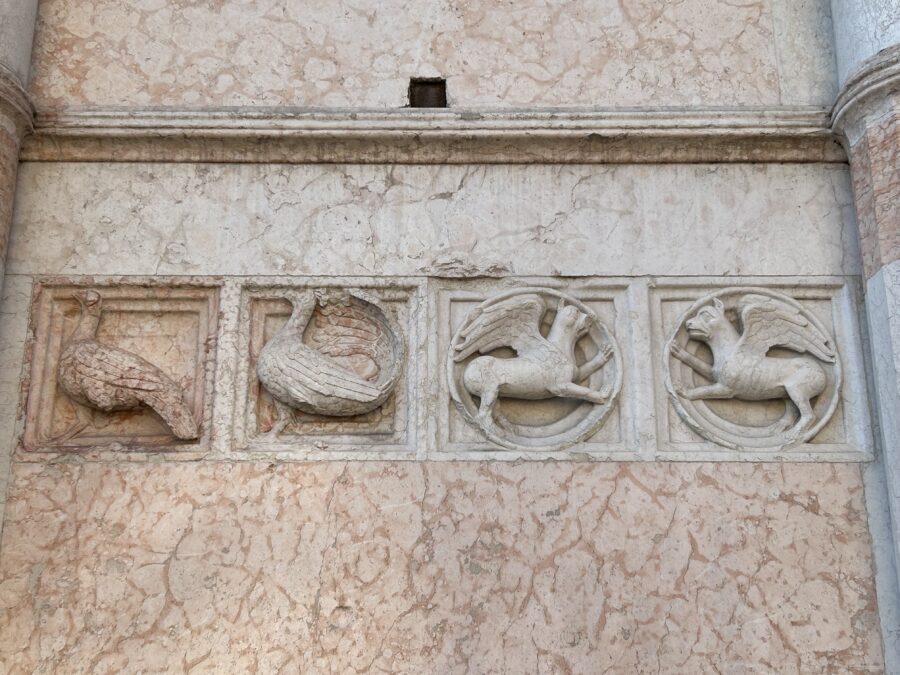
The most interesting decorative element of all (at least for me!), however, is the Zooforo: in 75 panels, sea monsters, centaurs, unicorns, basilisks, dogs, birds, griffins and sirens chase each other around the base of the Baptistery.
Competing with the Cathedral in size and length, a true place of resistance and rebirth is the Church of San Francesco del Prato: it was initially founded in 1230 by the Franciscan order, according to the canons of poverty and simplicity dictated by St. Bonaventura, which did not provide for any kind of embellishment or wealth. The Franciscans, however, have for centuries been a well-integrated order in the social fabric of communities and, even then, they knew how to deal with the inhabitants, talk about real life, and tended to get their hands dirty with daily activities. It is also thanks to this practical approach that they manage to get it built. In the 1400s, it was then embellished with sacred figures commissioned by the city’s wealthiest families, and then the drama: with the arrival of Napoleon’s army, the structure was defaced and plundered, and turned into a prison for political prisoners until the 1960s. It thus became a rare case in history, as churches are rarely parcelled out and turned into galleys.
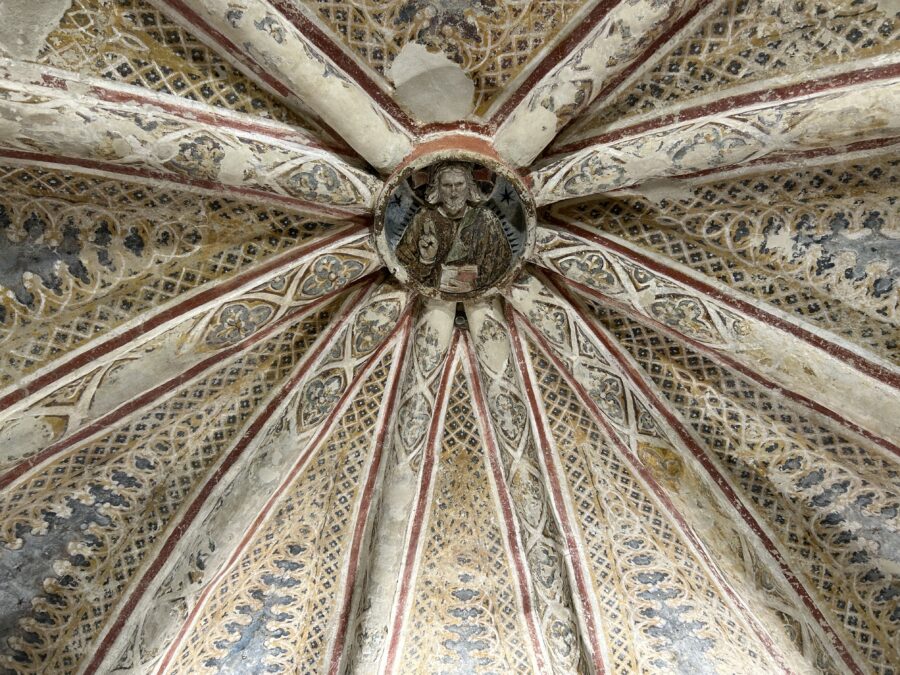
In 2021, incredibly, there was a rebirth: the Church of San Francesco del Prato was reopened to the public and to religious services, an event that is incredible when you think that its second life began at the very end of the pandemic. Since then, a group of volunteers has been accompanying travellers on weekends to see the stars again: the ticket costs € 10 and a visit lasting about an hour allows those who come here to wear a safety helmet and climb up the scaffolding to the apse. Up there is the miracle of art that spans the centuries: the starry sky, the Blessing Christ, figures of saints and holy men and women linked to St Francis, one of the few nice and decent saints in Christianity. Restorers work here during the week. Up there you can almost touch the apse with your finger, and you realise that you are a bit part of a secret: no one, apart from the original painters of these figures and us modern visitors, has ever been able to see these images as closely as you and your guide will. Before saying goodbye to this magical place, sit for a moment in the nave and close your eyes again: you will hear the swifts that come here to nest during these months.

Continue on. Pay a visit to the Complesso della Pilotta. Inside, in addition to an endless series of art galleries, you will find Teatro Farnese: it was originally a court theatre, when the Duke of Parma Ranuccio I Farnese had it built in 1618 (only two years after Shakespeare’s death), ambitious and determined to impress his guests. It was erected in a very short time and although it was made of wood and stucco, it was lavishly decorated with statues, wall frescoes, gilded medallions and classical capitals. The first spectacle was staged here in 1628 to celebrate a ducal wedding and included a tournament with real horses and even a naval battle! I don’t think he counted on his theatre surviving for centuries and impressing people more than 400 years later, but I am sure he would have liked the idea.
However, it must be said that over the centuries the place was rarely used, so much so that Dickens, when visiting Parma in 1844, described it as a dark and gloomy place, full of mould, on whose stage surely only ghosts would have acted. During World War II, Teatro Farnese was damaged by an air raid and a bomb that caused it to collapse almost completely. Only after the war was it heavily restored and this is how it has come down to us. In addition to travellers’ visits, this theatre is still used today for special productions and concerts. If you are passing through Parma in October, try to attend the operas staged here as part of the Festival Verdi events.
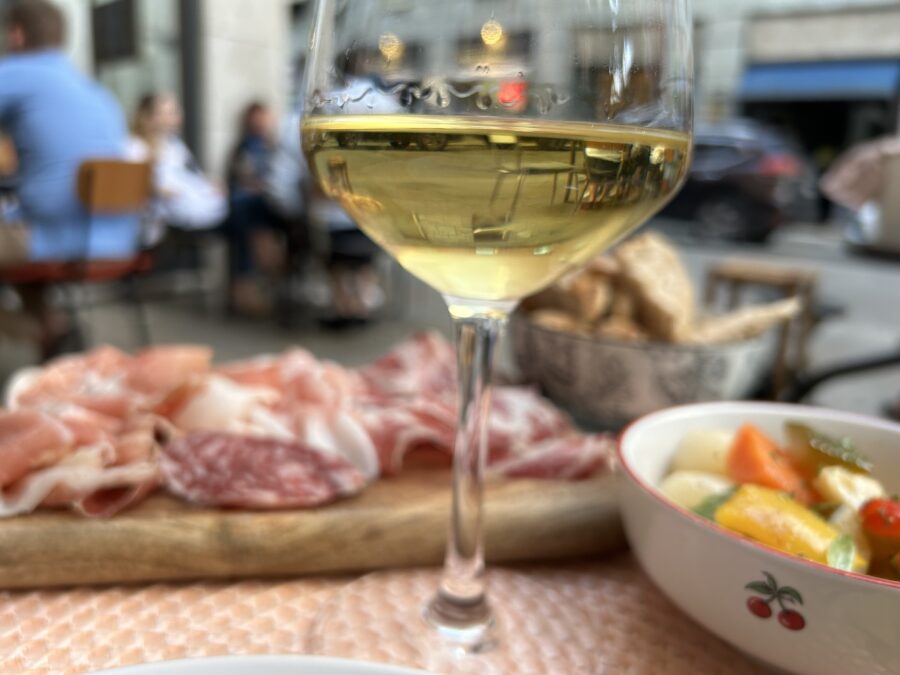
The day is almost over. Rest. Go and sit down at the Vineria Giramondo: have a glass of aromatic Malvasia di Candia. Ask them to bring you some giardiniera, which goes well with this wine, and certainly some prosciutto di Parma, born thanks to the weather, as well as the wind from the hills around the city: only here will you taste it like this, delicate, hazelnut perhaps. Listen to the chatter of those who often pass through or have arrived there by chance: a good traveller has no prearranged plans and no intention of arriving, someone wise said.
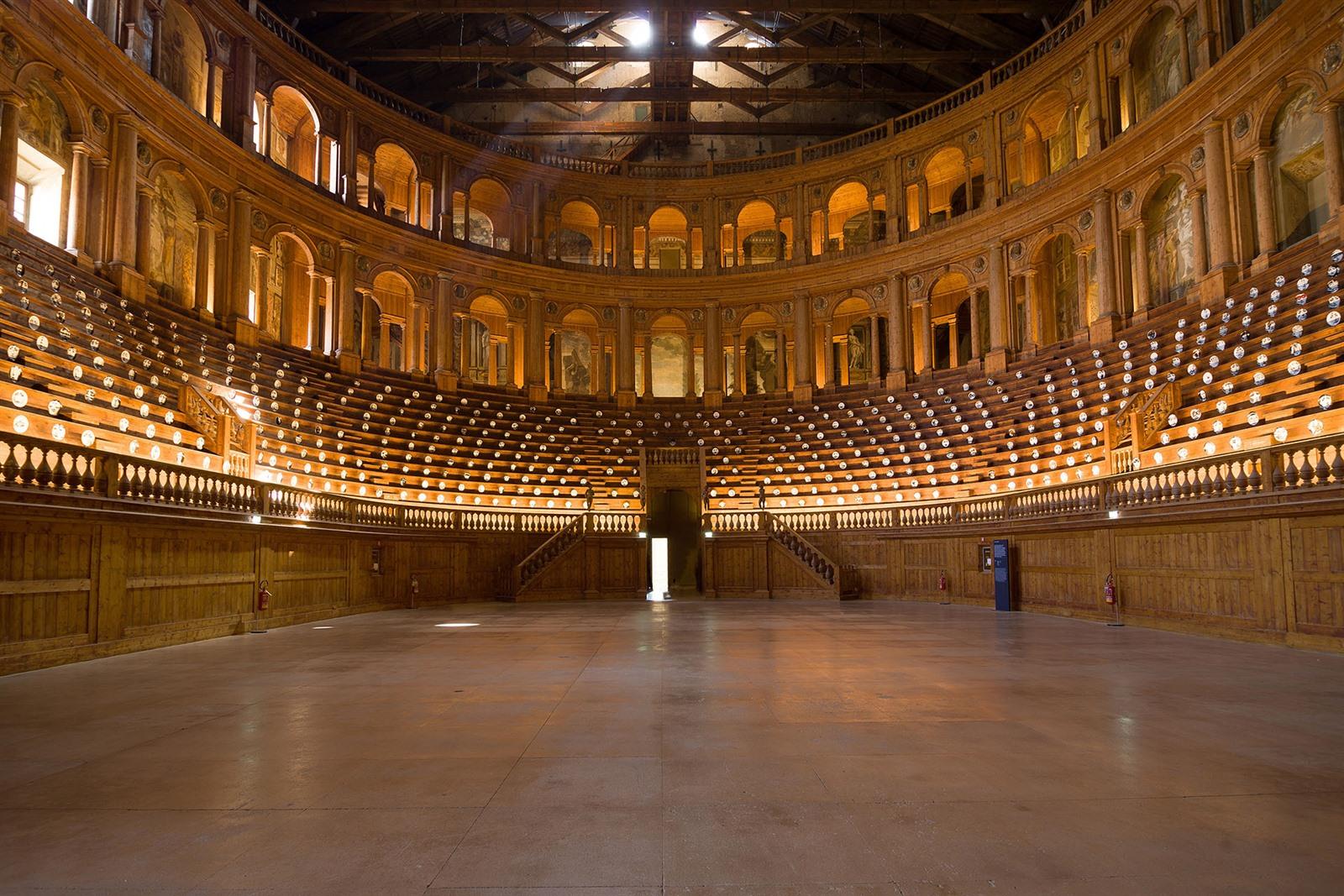
I need to go there now. What a great tour of Parma in words and pictures. As always, wonderful writing.
Thank you x
Thank you so much, dear reader and friend. I am planning to write new similar articles in the near future: it’s going to be a sort of a series of posts dedicated to slow travelling, so I hope you will enjoy them!